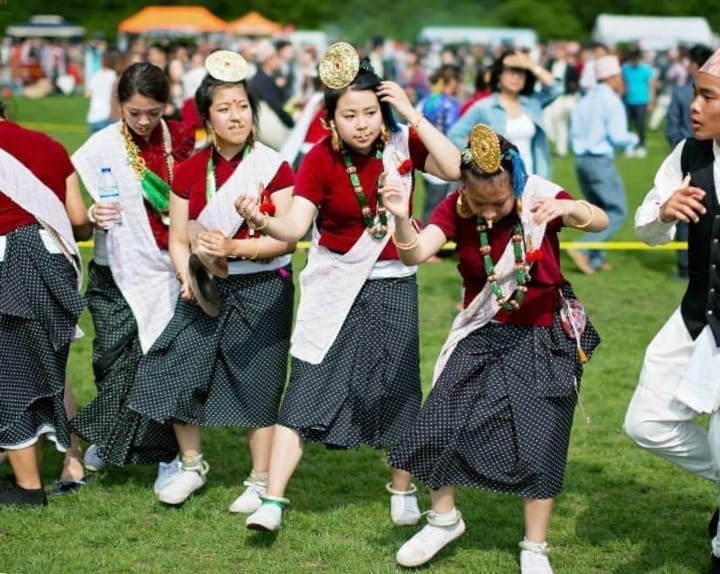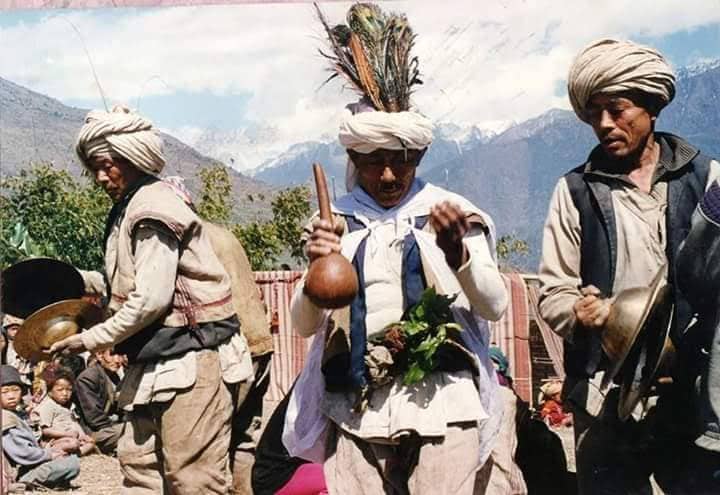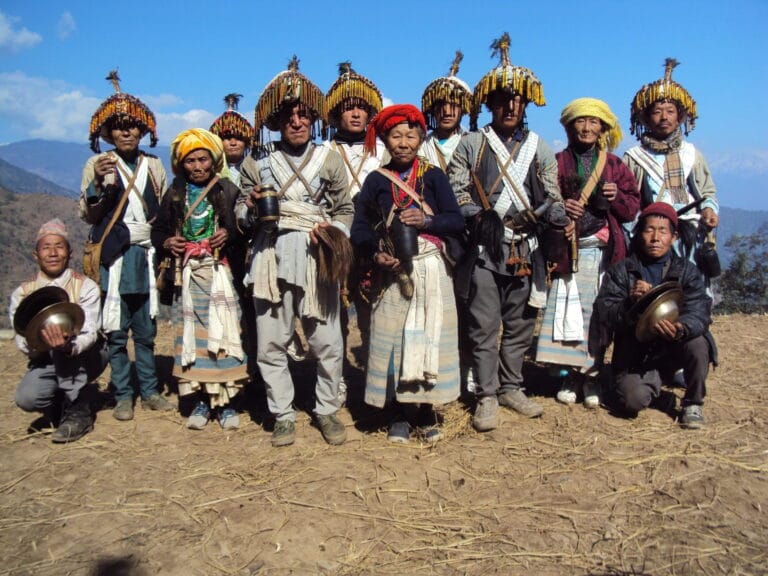Published on 14 November 2024
The Kirat Peoples: Rich Cultural Heritage, Traditions, and Unified Identity
For over 2000 years, the eastern Himalayas have been home to the Kirat people, often called their Himalayan homeland. Historical records describe this region as Kimpurusha Desha, the Kimpurusha Kingdom, or Kiratdesh. In Nepalese history, the Kirat people lived in the Kathmandu Valley and established a long-lasting ruling dynasty. They significantly influenced the region’s cultural and historical heritage, leaving a rich and lasting legacy.
The Kirat Ethnic Groups: Celebrating Rai, Limbu, Yakkha, and Sunuwar
- Rai (Khambu):
One of the oldest and most influential tribes within the Kirat groups, the Rai have long practiced animal farming and agriculture. They focus on worshiping nature and ancestral spirits, a tradition they actively uphold today. The Rai resisted the Gorkha invasions and speak a variety of languages. They belong to numerous subgroups, including Bantawa, Chamling, Sampang, Dumi, Kulung, Thulung, Khaling, Puma, Koyu, Nachhiring, Tilung, Yamphu, Mewahang, Lohorung, Bahing, Athpare, Belhare, Chiling, Mugali, Phangduwali, Jerung, Wambule, and Dewas, among others.
- Limbu (Yakthung):
Also called Yakthung or Yakthum, meaning “heroes of the hills,” the Limbu take pride in their strong cultural identity. The Shah Kings awarded the title “Subba” to Limbu village chiefs. Their homes symbolize the goddess Yuma, while the “Silam-Sakma” symbol identifies their community and reflects their unique heritage.
- Yakkha (Dewan):
Descendants of Nepal’s prehistoric dynasty, the Yakkha mainly live in the lower Arun Valley and sustain themselves through farming. Outside influences and modernization threaten their language. The Yakkha community comprises 32 family names (Thar), each divided into a sub-group called Sameychong. People traditionally avoid marrying within the same Sameychong. In the 2001 census, Nepal recorded 17,003 Yakkhas, with smaller populations living in Darjeeling, Kalimpong, Sikkim, and other parts of India.
- Sunuwar (Koinch):
The Sunuwar, a Tibeto-Burman ethnic group, actively engage in agriculture and cattle farming. They celebrate a rich cultural heritage with key festivals like the Shandar Dance during Baisakh Purnima, Gil Puja, and Meserani Puja. Their New Year begins during Basanta Panchami, and they observe Meserani Puja twice a year, following the lunar calendar.
Conclusion
While each Kirat group preserves its distinct traditions and cultural practices, shared historical and cultural ties unite them. The term “Kirati” represents these diverse communities, connecting them through their collective heritage and enduring traditions.
Celebrate and Share the Rich Heritage of the Kirat People
If you found this article informative, share it with others who might enjoy learning about the rich cultural heritage of the Kirat people. We’d love to hear your thoughts and insights—leave a comment below and join the conversation! Let’s celebrate the diversity that makes these communities so unique and spread awareness together.
For over 2000 years, the eastern Himalayas have been home to the Kirat people, often called their Himalayan homeland. Historical records describe this region as Kimpurusha Desha, the Kimpurusha Kingdom, or Kiratdesh. In Nepalese history, the Kirat people lived in the Kathmandu Valley and established a long-lasting ruling dynasty. They significantly influenced the region’s cultural and historical heritage, leaving a rich and lasting legacy.
The Kirat Ethnic Groups: Celebrating Rai, Limbu, Yakkha, and Sunuwar
- Rai (Khambu): One of the oldest and most influential tribes within the Kirat groups, the Rai have long practiced animal farming and agriculture. They focus on worshiping nature and ancestral spirits, a tradition they actively uphold today. The Rai resisted the Gorkha invasions and speak a variety of languages. They belong to numerous subgroups, including Bantawa, Chamling, Sampang, Dumi, Kulung, Thulung, Khaling, Puma, Koyu, Nachhiring, Tilung, Yamphu, Mewahang, Lohorung, Bahing, Athpare, Belhare, Chiling, Mugali, Phangduwali, Jerung, Wambule, and Dewas, among others.
- Limbu (Yakthung): Also called Yakthung or Yakthum, meaning “heroes of the hills,” the Limbu take pride in their strong cultural identity. The Shah Kings awarded the title “Subba” to Limbu village chiefs. Their homes symbolize the goddess Yuma, while the “Silam-Sakma” symbol identifies their community and reflects their unique heritage.
- Yakkha (Dewan): Descendants of Nepal’s prehistoric dynasty, the Yakkha mainly live in the lower Arun Valley and sustain themselves through farming. Outside influences and modernization threaten their language. The Yakkha community comprises 32 family names (Thar), each divided into a sub-group called Sameychong. People traditionally avoid marrying within the same Sameychong. In the 2001 census, Nepal recorded 17,003 Yakkhas, with smaller populations living in Darjeeling, Kalimpong, Sikkim, and other parts of India.
- Sunuwar (Koinch): The Sunuwar, a Tibeto-Burman ethnic group, actively engage in agriculture and cattle farming. They celebrate a rich cultural heritage with key festivals like the Shandar Dance during Baisakh Purnima, Gil Puja, and Meserani Puja. Their New Year begins during Basanta Panchami, and they observe Meserani Puja twice a year, following the lunar calendar.
Conclusion
While each Kirat group preserves its distinct traditions and cultural practices, shared historical and cultural ties unite them. The term “Kirati” represents these diverse communities, connecting them through their collective heritage and enduring traditions.
Celebrate and Share the Rich Heritage of the Kirat People
If you found this article informative, share it with others who might enjoy learning about the rich cultural heritage of the Kirat people. We’d love to hear your thoughts and insights—leave a comment below and join the conversation! Let’s celebrate the diversity that makes these communities so unique and spread awareness together.
For over 2000 years, the eastern Himalayas have been home to the Kirat people, often called their Himalayan homeland. Historical records describe this region as Kimpurusha Desha, the Kimpurusha Kingdom, or Kiratdesh. In Nepalese history, the Kirat people lived in the Kathmandu Valley and established a long-lasting ruling dynasty. They significantly influenced the region’s cultural and historical heritage, leaving a rich and lasting legacy.
The Kirat Ethnic Groups: Celebrating Rai, Limbu, Yakkha, and Sunuwar
- Rai (Khambu): One of the oldest and most influential tribes within the Kirat groups, the Rai have long practiced animal farming and agriculture. They focus on worshiping nature and ancestral spirits, a tradition they actively uphold today. The Rai resisted the Gorkha invasions and speak a variety of languages. They belong to numerous subgroups, including Bantawa, Chamling, Sampang, Dumi, Kulung, Thulung, Khaling, Puma, Koyu, Nachhiring, Tilung, Yamphu, Mewahang, Lohorung, Bahing, Athpare, Belhare, Chiling, Mugali, Phangduwali, Jerung, Wambule, and Dewas, among others.
- Limbu (Yakthung): Also called Yakthung or Yakthum, meaning “heroes of the hills,” the Limbu take pride in their strong cultural identity. The Shah Kings awarded the title “Subba” to Limbu village chiefs. Their homes symbolize the goddess Yuma, while the “Silam-Sakma” symbol identifies their community and reflects their unique heritage.
- Yakkha (Dewan): Descendants of Nepal’s prehistoric dynasty, the Yakkha mainly live in the lower Arun Valley and sustain themselves through farming. Outside influences and modernization threaten their language. The Yakkha community comprises 32 family names (Thar), each divided into a sub-group called Sameychong. People traditionally avoid marrying within the same Sameychong. In the 2001 census, Nepal recorded 17,003 Yakkhas, with smaller populations living in Darjeeling, Kalimpong, Sikkim, and other parts of India.
- Sunuwar (Koinch): The Sunuwar, a Tibeto-Burman ethnic group, actively engage in agriculture and cattle farming. They celebrate a rich cultural heritage with key festivals like the Shandar Dance during Baisakh Purnima, Gil Puja, and Meserani Puja. Their New Year begins during Basanta Panchami, and they observe Meserani Puja twice a year, following the lunar calendar.
Conclusion
While each Kirat group preserves its distinct traditions and cultural practices, shared historical and cultural ties unite them. The term “Kirati” represents these diverse communities, connecting them through their collective heritage and enduring traditions.
Celebrate and Share the Rich Heritage of the Kirat People
If you found this article informative, share it with others who might enjoy learning about the rich cultural heritage of the Kirat people. We’d love to hear your thoughts and insights—leave a comment below and join the conversation! Let’s celebrate the diversity that makes these communities so unique and spread awareness together.




